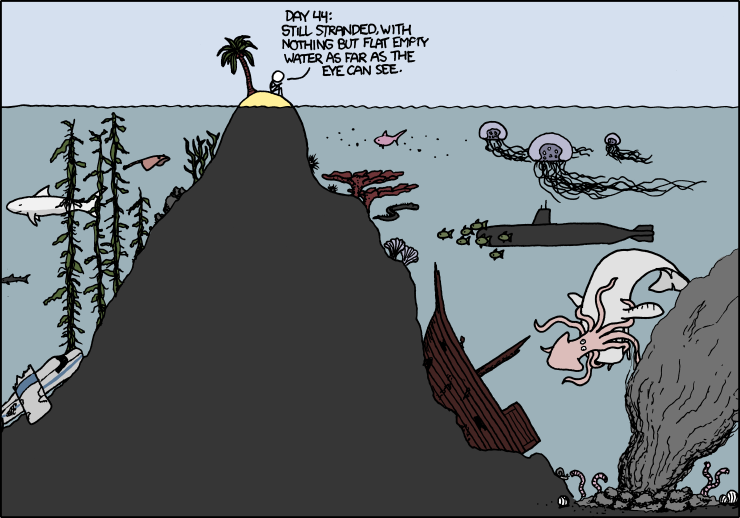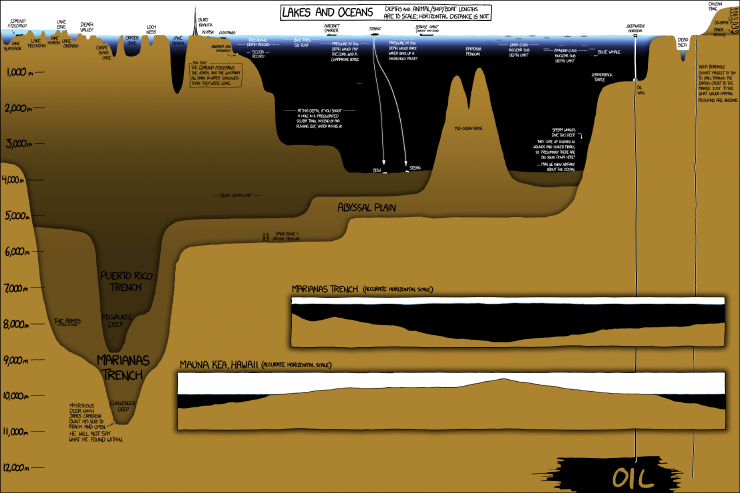By Dominique Kone, Masters Student in Marine Resource Management
Over the past year, the GEMM Lab has been investigating the ecological factors associated with a potential sea otter reintroduction to Oregon. A potential reintroduction is not only of great interest to our lab, but also to several other researchers, managers, tribes, and organizations in the state. With growing interest, this idea is really starting to gain momentum. However, the best path forward to making this idea a reality is somewhat unknown, and will no doubt take a lot of time and effort from multiple groups.
In an effort to catalyze this process, the Elakha Alliance – led by Bob Bailey – organized the Oregon Sea Otter Status of Knowledge Symposium earlier this month in Newport, OR. The purpose of this symposium was to share information, research, and lessons learned about sea otters in other regions. Speakers – primarily scientists, managers, and graduate students – flew in from all over the U.S. and the Canadian west coast to share their expertise and discuss various factors that must be considered before any reintroduction efforts begin. Here, I review some of the key takeaways from those discussions.

To start the meeting, Dr. Anne Salomon – an associate professor from Simon Fraser University – and Kii’iljuus Barbara Wilson – a Haida Elder – gave an overview of the role of sea otters in nearshore ecosystems and their significance to First Nations in British Columbia. Hearing these perspectives not only demonstrated the various ecological effects – both direct and indirect – of sea otters, but it also illustrated their cultural connection to indigenous people and the role tribes can play (and currently do play in British Columbia) in co-managing sea otters. In Oregon, we need to be aware of all the possible effects sea otters may have on our ecosystems and acknowledge the opportunity we have to restore these cultural connections to Oregon’s indigenous people, such as the Confederated Tribes of Siletz Indians.

The symposium also involved several talks on the recovery of sea otter populations in other regions, as well as current limitations to their population growth. Dr. Lilian Carswell and Dr. Deanna Lynch – sea otter and marine conservation coordinators with the U.S. Fish & Wildlife Service – and Dr. Jim Bodkin – a sea otter ecologist – provided these perspectives. Interestingly, not all stocks are recovering at the same rate and each population faces slightly different threats. In California, otter recovery is slowed by lack of available food and mortality due to investigative shark bites, which prevents range expansion. In other regions, such as Washington, the population appears to be growing rapidly and lack of prey and shark bite-related mortality appear to be less important. However, this population does suffer from parasitic-related mortality. The major takeaway from these recovery talks is that threats can be localized and site-specific. In considering a reintroduction to Oregon, it may be prudent to investigate if any of these threats and population growth limitations exist along our coastline as they could decrease the potential for sea otters to reestablish.

Dr. Shawn Larson – a geneticist and ecologist from the Seattle Aquarium – gave a great overview of the genetic research that has been conducted for historical (pre-fur trade) Oregon sea otter populations. She explained that historical Oregon populations were genetically-similar to both southern and northern populations, but there appeared to be a “genetic gradient” where sea otters near the northern Oregon coast were more similar to northern populations – ranging to Alaska – and otters from the southern Oregon coast were more similar to southern populations – ranging to California. Given this historic genetic gradient, reintroducing a mixture of sea otters – subsets from contemporary northern and southern stocks – should be considered in a future Oregon reintroduction effort. Source-mixing could increase genetic diversity and may more-closely resemble genetic diversity levels found in the original Oregon population.
At the end of the meeting, an expert panel – including Dr. Larson, Dr. Bodkins, Dr. Lynch, and Dr. Carswell – provided their recommendations on ways to better inform this process. To keep this brief, I’ll discuss the top three recommendations I found most intriguing and important.
- Gain a better understanding of sea otter social behavior. Sea otters have strong social bonds, and previous reintroductions have failed because relocated individuals returned to their capture sites to rejoin their source populations. While this site fidelity behavior is relatively understood, we know less about the driving mechanisms – such as age or sex – of those behaviors. Having a sound understanding of these behaviors and their mechanisms could help to identify those which may hinder reestablishment following a reintroduction.
- When anticipating the impacts of sea otters on ecosystems, investigate the benefits too. When we think of impacts, we typically think of costs. However, there are documented benefits of sea otters, such as increasing species diversity (Estes & Duggins 1995, Lee et al. 2016). Identifying these benefits – as well as to people – would more completely demonstrate their importance.
- Investigate the human social factors and culture in Oregon relative to sea otters, such as perceptions of marine predators. Having a clear understanding of people’s attitudes toward marine predators – particularly marine mammals – could help managers better anticipate and mitigate potential conflicts and foster co-existence between otters and people.

While much of the symposium was focused on learning from experts in other regions, I would be remiss if I didn’t recognize the great talks given by a few researchers in Oregon – including Sara Hamilton (OSU doctoral student), Dr. Roberta Hall (OSU emeritus professor), Hannah Wellman (University of Oregon doctoral student), and myself. Individually, we spoke about the work that has already been done and is currently being done on this issue – including understanding bull kelp ecology, studying sea otter archaeological artifacts, and a synthesis of the first Oregon translocation attempt. Collectively, our talks provided some important context for everyone else in the room and demonstrated that we are working to make this process as informed as possible for managers. Oregon has yet to determine if they will move forward with a sea otter reintroduction and what that path forward will look like. However, given this early interest – as demonstrated by the symposium – we, as researchers, have a great opportunity to help guide this process and provide informative science.
References:
Estes, J. A. and D. O. Duggins. 1995. Sea otters and kelp forests in Alaska: generality and variation in a community ecological paradigm. Ecological Monographs. 65: 75-100.
Lee, L. C., Watson, J. C., Trebilco, R., and A. K. Salomon. 2016. Indirect effects and prey behavior mediate interactions between an endangered prey and recovering predator. Ecosphere. 7(12).
















































